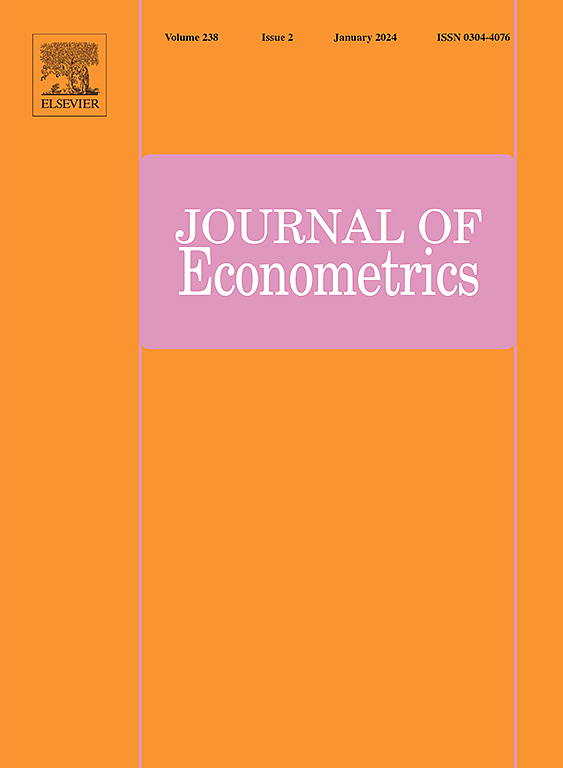特质波动率的横截面依赖性
IF 4
3区 经济学
Q1 ECONOMICS
引用次数: 0
摘要
本文介绍了一个利用高频数据分析资产特殊波动的横截面依赖性的计量经济学框架。我们首先考虑在协方差和相关性等特质波动中依赖的标准度量的估计。这些措施的朴素估计是有偏差的,因为使用的是对特殊波动率的错误估计。我们提供了偏校正估计量和相关的渐近理论。接下来,我们引入了一个特殊波动因子模型,在该模型中,我们将特殊波动率的变化分解为两部分:与市场波动等系统因素相关的变化和剩余变化。同样,分解的朴素估计是有偏差的,我们提供了偏差校正估计。我们还提供了渐近理论,使我们能够测试特异性波动的残差(非系统)成分是否表现出横截面依赖性。我们将我们的方法应用于标准普尔100指数的成分股,并证明了它们的特殊波动性具有很强的横截面依赖性。我们考虑了两组不同的特殊波动因子,并发现它们都不能完全解释特殊波动的横截面依赖性。对于每个模型,我们绘制了所有股票的剩余(非系统)特质波动的依赖网络。本文章由计算机程序翻译,如有差异,请以英文原文为准。
Cross-sectional dependence in idiosyncratic volatility
This paper introduces an econometric framework for analyzing cross-sectional dependence in the idiosyncratic volatilities of assets using high frequency data. We first consider the estimation of standard measures of dependence in the idiosyncratic volatilities such as covariances and correlations. Naive estimators of these measures are biased due to the use of the error-laden estimates of idiosyncratic volatilities. We provide bias-corrected estimators and the relevant asymptotic theory. Next, we introduce an idiosyncratic volatility factor model, in which we decompose the variation in idiosyncratic volatilities into two parts: the variation related to the systematic factors such as the market volatility, and the residual variation. Again, naive estimators of the decomposition are biased, and we provide bias-corrected estimators. We also provide the asymptotic theory that allows us to test whether the residual (non-systematic) components of the idiosyncratic volatilities exhibit cross-sectional dependence. We apply our methodology to the S&P 100 index constituents, and document strong cross-sectional dependence in their idiosyncratic volatilities. We consider two different sets of idiosyncratic volatility factors, and find that neither can fully account for the cross-sectional dependence in idiosyncratic volatilities. For each model, we map out the network of dependencies in residual (non-systematic) idiosyncratic volatilities across all stocks.
求助全文
通过发布文献求助,成功后即可免费获取论文全文。
去求助
来源期刊

Journal of Econometrics
社会科学-数学跨学科应用
CiteScore
8.60
自引率
1.60%
发文量
220
审稿时长
3-8 weeks
期刊介绍:
The Journal of Econometrics serves as an outlet for important, high quality, new research in both theoretical and applied econometrics. The scope of the Journal includes papers dealing with identification, estimation, testing, decision, and prediction issues encountered in economic research. Classical Bayesian statistics, and machine learning methods, are decidedly within the range of the Journal''s interests. The Annals of Econometrics is a supplement to the Journal of Econometrics.
 求助内容:
求助内容: 应助结果提醒方式:
应助结果提醒方式:


